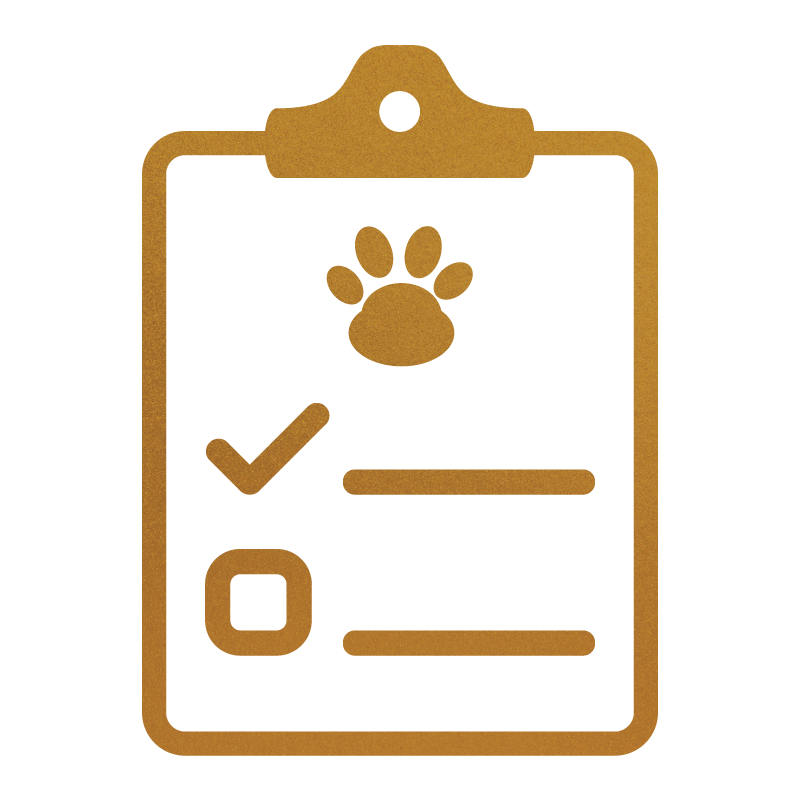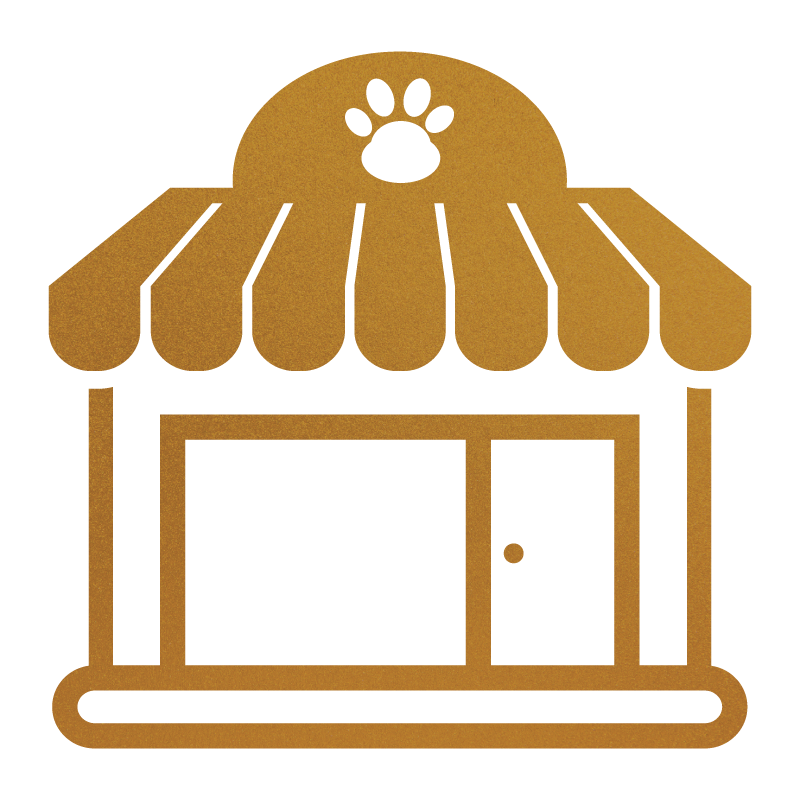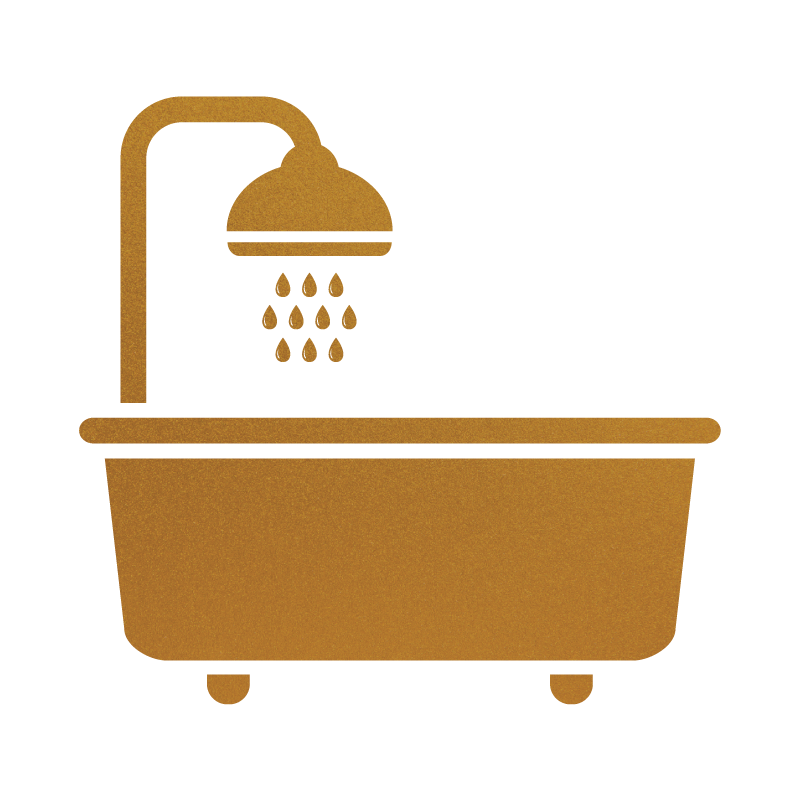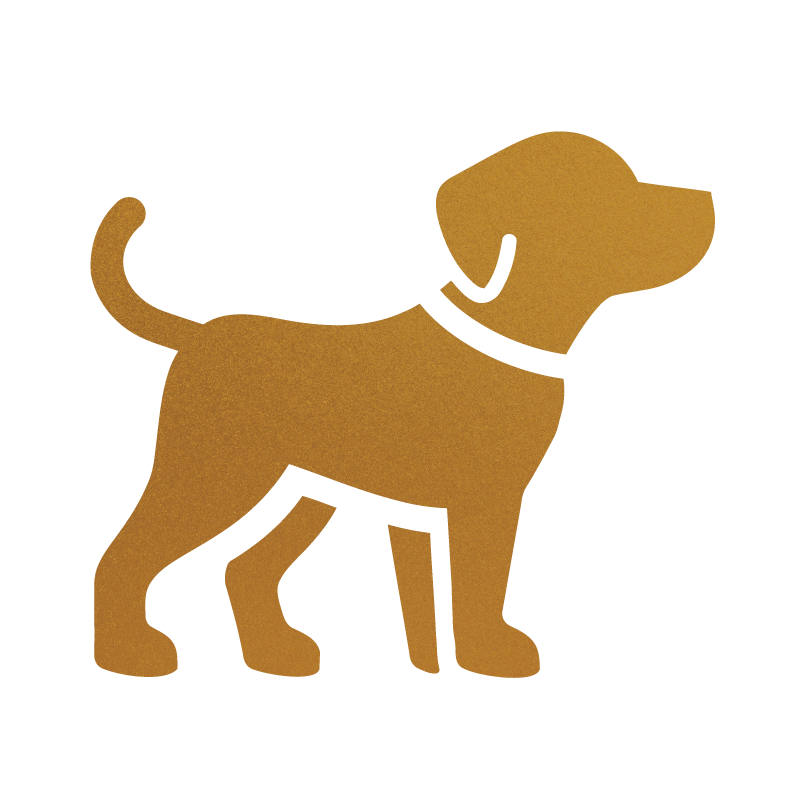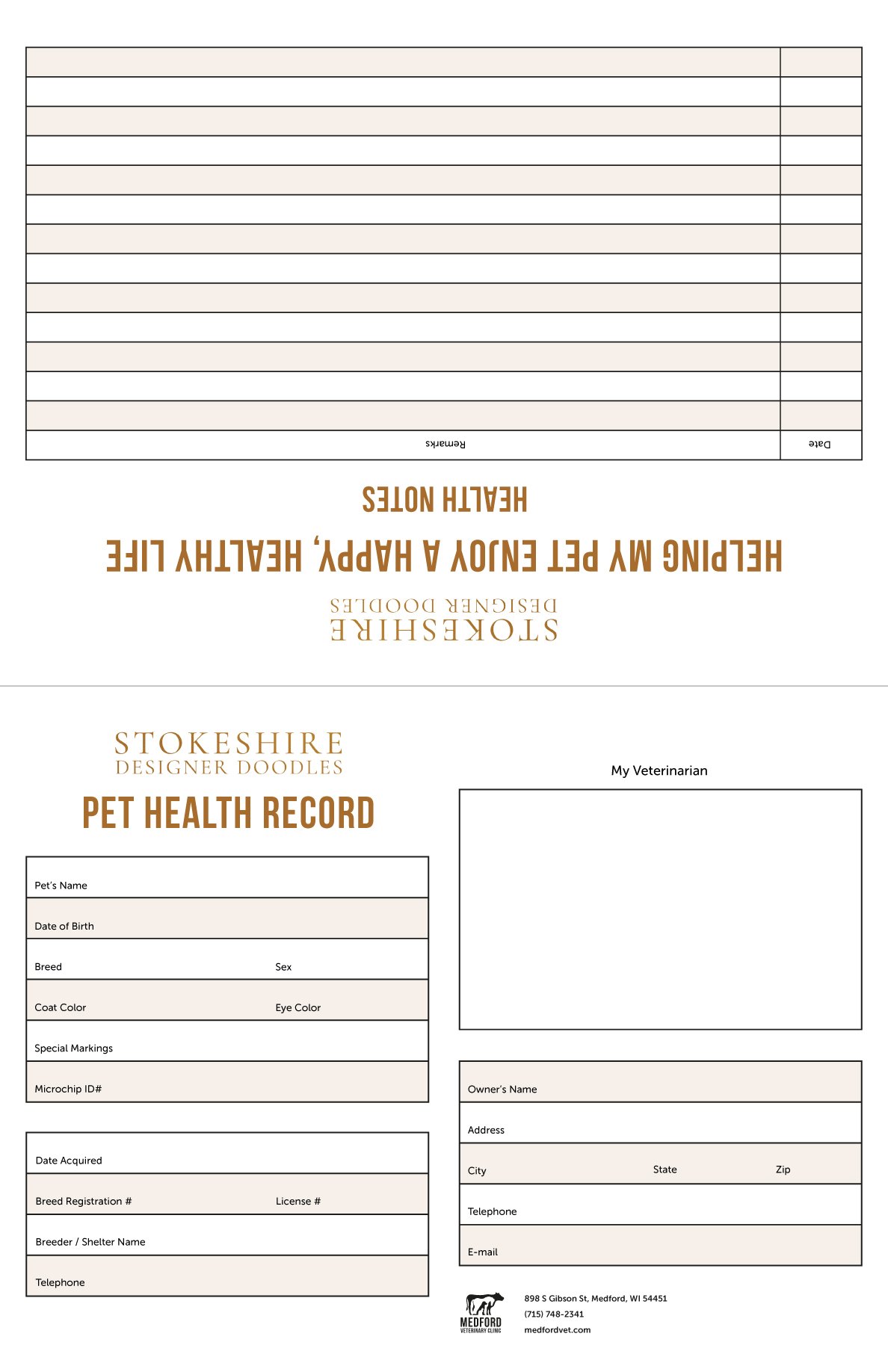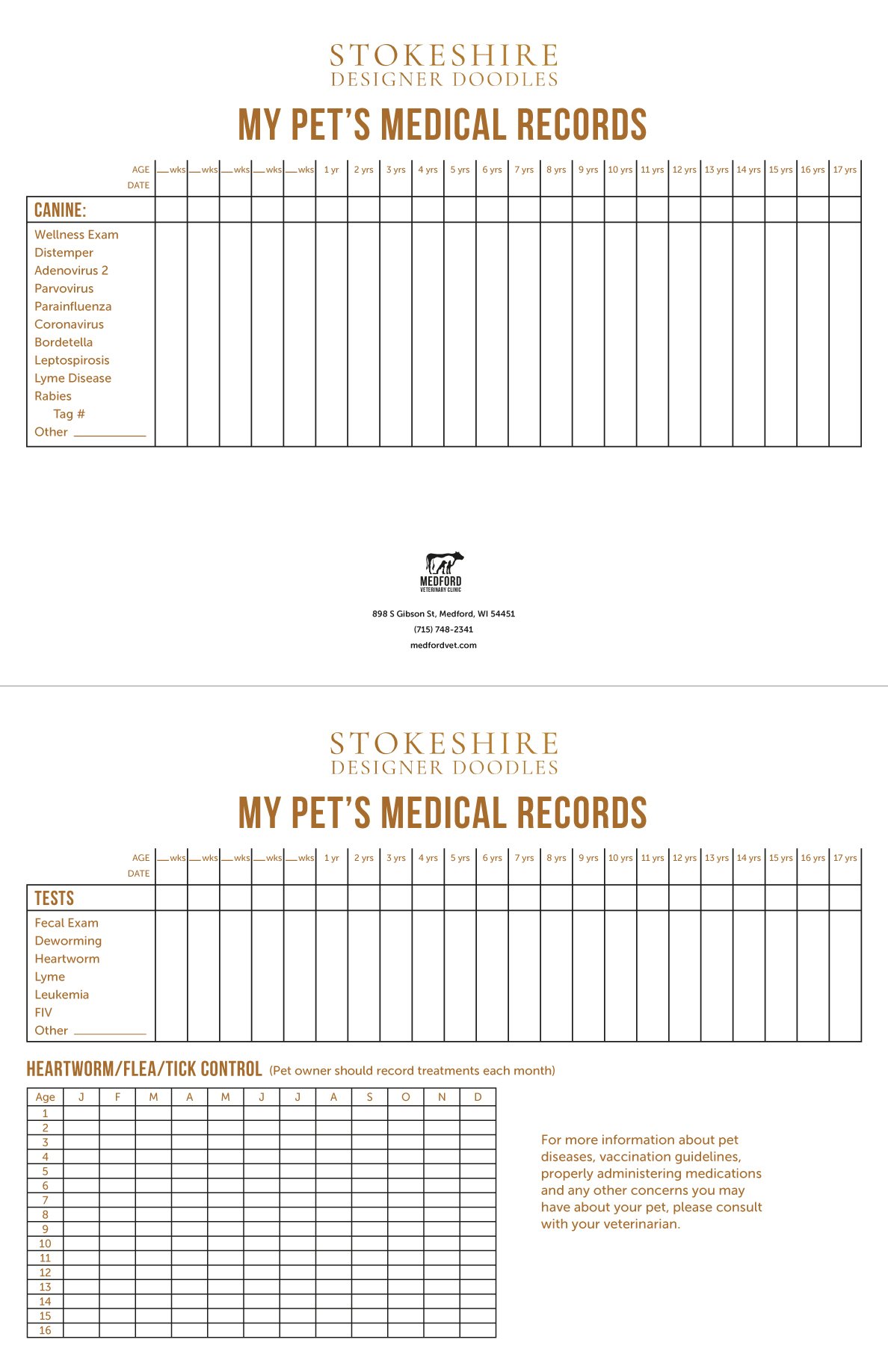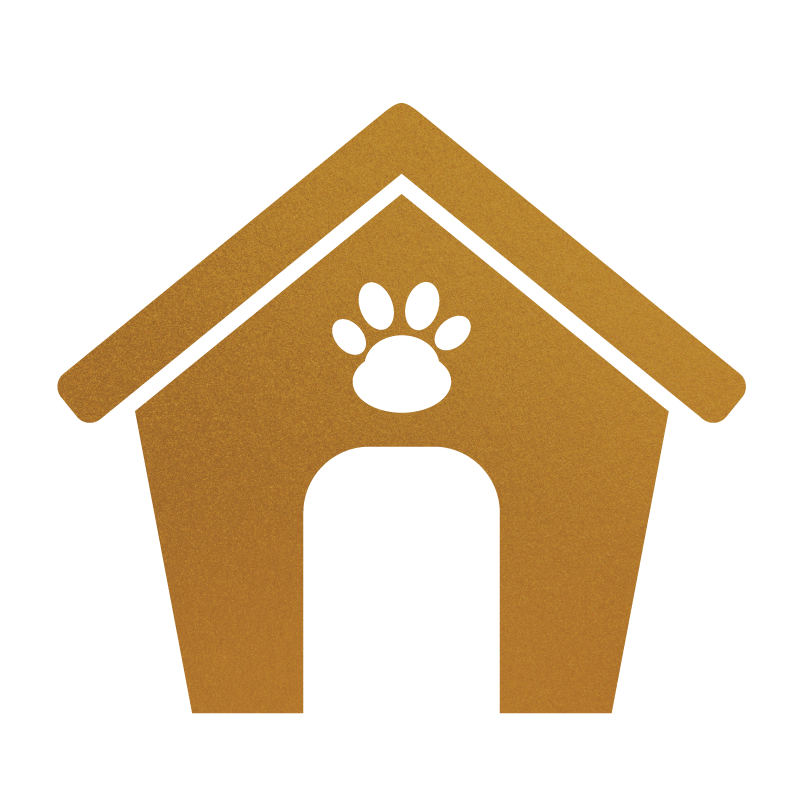Common Questions
-
Puppies are priced based on factors like size, gender, coat, and eye color, with posted prices subject to change. Breeders may adjust prices at their discretion without indicating lower quality. Pricing is approximate and subject to change based on market value. A $500 + tax deposit is required, which goes towards the purchase price. Full payment must be made by 7 weeks old or 48 hours after pick day, or 1 week before departure if using a pet nanny, or all monies paid are forfeited. Discounts of 10% are available for various groups, but cannot be applied to certain services. Referral discounts and a buyout program for those on waitlists with other breeders are also offered. Breeding rights are available to approved programs at a premium.
-
Yes, all of our puppies are seen by a licensed vet around 6 weeks of age. We primarily work with the Medford Vet Clinic and include a Health Record. You will need to schedule a series of appointments with your local vet for their additional rounds of vaccines.
This will be included in your puppy pack folder:
In order to fly/transport your puppy this is required by most airlines.
Certificate of Veterinary Inspection (health certificate or CVI)
Proof of vaccinations (Proof of rabies vaccination if required) and other most common illnesses.
Requires an examination by a licensed and accredited veterinarian to make sure the animal is not showing signs of disease.
-
Before purchasing your crate, we want to first estimate the size of your puppy at its adult weight. We make estimates for each litter based on the size of the parents and DNA analysis. We use several methods to give us a clearer picture of their future size and weight.
Doodle Crate Sizes Length of Crate (Tip: Equal to the length of the adult dog from nose to tail +3 in)
XS 19" <20 lbs. Toy AussiedoodleS 24" 20-30 lbs. Mini Aussiedoodles
M 30" 30-40 lbs. Mini-Bernedoodles, Mini- AMD
L 36" 40-70 lbs. Moyen Doodles, Standard Golden Doodles, AMD
2XL 48" 90 lbs. + Large Males from our Standard Breeds
We recommend an adjustable crate that allows them just enough room, to help reduce puppy accidents. Click here for our crate training guide.
-
In every Stokeshire Puppy Pack, you will find a branded folder that includes your puppy’s Vet Health Record completed by Medford Vet Clinic. You will find a Birth Certificate where you can put your puppy’s name and a socialization checklist with our Training Guide.
Scented Bandannas that have been rubbed on littermates and mom are also included.
Additionally, you will find toys, treats, and food.
Bags weigh under 3 lbs and are easily stored in a backpack.
We have promotional items in your folder for you to review and there are seasonal items that do vary.
If your puppy graduated from Doodle School, there will be additional items in your pack!
Flight Nanny clients will be gifted a small soft crate to allow for safe travels. If you wish to not keep this item, we will happily reuse it!
-
Stokeshire refrains from microchipping their puppies before 8 weeks old due to their commitment to ethical breeding practices and personalized pet care. Their approach prioritizes the emotional and physical well-being of the animals, fostering a bond built on trust and responsibility. This stance challenges the notion of pet ownership as a transactional endeavor and advocates for a more holistic approach to pet care, where each animal is treated as a cherished individual. By delaying microchipping until adoption, Stokeshire aims to promote a deeper connection between pet and owner, rooted in mutual understanding and respect. Stokeshire recommends that puppy buyers connect with their local veterinarian to arrange for microchipping their puppies after 8 weeks old. This ensures that all vet records and information are directly linked to the new owners, facilitating ongoing care and management of the puppies' health. Additionally, establishing a relationship with a local vet allows for personalized care tailored to the specific needs of each puppy, promoting their well-being and providing valuable support to their new owners.
-
From 4-8 weeks, we currently use Naturals Diamond Naturals Skin & Coat All Life Stages Dog Salmon & Potato Formula Dry Dog Food.
We recommend avoiding foods that include BHA or BHT and choosing foods that have natural preservatives such as alpha tocopherols or ascorbate, which are forms of vitamin E & C.
When introducing puppy food, mix it with warm water, let it soak until soft, and then mash it with a fork or pastry blender. A slightly lumpy consistency, not too difficult to chew, is good.
You can add cooked, plain white rice can be a good option for a dog with an upset stomach, as it is easy to digest and helps bind stool.
Plain, boiled pulled chicken with no seasoning is also a good option when a dog has an upset stomach.
Plain canned pumpkin is a healthy choice for your doodle puppy. Both fresh and canned pumpkin are good sources of nutrients and fiber, but canned pumpkin contains a higher concentration of fiber and nutrients compared to fresh pumpkin. You can also mix this with puppy food for a little treat or to transition.
-
We recommend slip collars for our puppies at first. Slip leads can be cruel if handled incorrectly as a dog training tool, however, in the right hands of an adult, we find these work very well. As your puppy grows, we recommend finding a collar and harness that will fit their adult size. We work with PACK for our Collars and Harnesses - Use STOKESHIRE at checkout for 20% off!
-
8 WEEKS
Canine Distemper Combination (Distemper, Hepatitis, Leptospirosis, Parvo Virus, Parainfluenza, Corona Virus)
12 WEEKS
Canine Distemper Combination (Distemper, Hepatitis, Leptospirosis, Parvo Virus, Parainfluenza, Corona Virus)
Lymes Disease Vaccination (booster 3-4 weeks later)
16 WEEKS
Canine Distemper Combination (Distemper, Hepatitis, Leptospirosis, Parvo Virus, Parainfluenza, Corona Virus)
Rabies vaccination (re-vaccinate one year later)
-
We recommend Bravecto. 1 DOSE. 12* WEEKS OF FLEA AND
TICK PROTECTION FOR YOUR DOG.
We also recommend removing the fleas & ticks from your yard.
Fleas and ticks usually end up on your dog while they are outside your home, so creating a yard that is dog-friendly, but not favorable for pests, is crucial.
Treat the Yard
There are plenty of natural products that use essential oils and other non-toxic ingredients that can be sprayed on your yard to prevent pests from breeding near your home.
Create a Barrier
Remove leaf litter and plantings within 6-18 inches of your house.
Mow the Lawn
You shouldn’t let your grass grow too high, as fleas and ticks prefer to breed in tall grass. However, refrain from mowing your lawn too short, since this repels ants and spiders – the fleas’ natural enemies.
Apply Cedar Mulch
Fleas hate cedar, so using cedar mulch in your gardens and around your home acts as a natural barrier.
Trim Limbs and Shrubs
Fleas and ticks prefer dark, damp areas, so remove dead limbs and prune thick shrubs to allow sunlight to permeate your yard.
Inside Your Home
Once fleas have gotten into your home, it's hard to get rid of them!
DIY Traps
Fill a wide, shallow pan with soapy water and place it on the floor in the area that you believe is highly populated with fleas. Shine a lamp directly over the water. Fleas are drawn to the heat of the lamp and will jump into the light, only to land in the soapy water. The soap in the water prevents the flea from jumping out, causing them to die.
Diatomaceous Earth
Food-grade diatomaceous earth can be applied to your pet’s environment to quickly kill fleas. Diatomaceous earth is sharp and will cut holes in the flea’s body. It is also extremely absorbent and will dehydrate the flea, causing them to die. When used inside your home around windows, doors, baseboards, dog beds, or carpets, you should vacuum treated areas after a few hours to remove any dead fleas. You can then re-apply the diatomaceous earth to kill the remaining fleas. While food-grade diatomaceous earth is safe for use around your pets, you should be careful when sprinkling it so that your pet doesn’t inhale the earth or try to ingest it. Check with your veterinarian before applying the earth directly to your pet’s coat. Diatomaceous earth can dry out skin and cause it to become irritated.
DIY Shampoos & Sprays
Vinegar
Combine 1 quart of water, 1 cup of white vinegar or apple cider vinegar, and 1 cup of baby shampoo or liquid dish soap. Use this mixture to bathe your dog once or twice a month. Vinegar kills fleas and ticks on contact and can prevent future infestations.
Lemon Wash Deterrent
Lemon juice repels fleas and can be used in several ways to keep them off of your pet. For this mixture, you will need 4 slices of fresh lemon, 1 tablespoon of salt, and 6 cups of water. Heat the water until boiling, then add the salt and fresh lemon. Boil for two minutes and then remove from the heat. Let the mixture steep for a full day (24 hours), then apply to your dog’s fur after shampooing and washing them. This mixture can be applied daily.
For more information on homemade shampoos, please see this article from the American Kennel Club.
Essential Oils
Essential oils are the concentrated versions of natural oils in plants that are distilled or cold pressed and then bottled in high concentrations. While some essential oils are toxic to dogs and/or cats, there are some that have proven to be beneficial to repelling pests. Diluted essential oils can be used to create spray-on repellants, added to your dog’s shampoo, or brushed into your dog’s coat.
It’s important to speak with your veterinarian before using essential oils in your home or on your pets to determine safe plants, brands, and concentrations. If you have a cat in your home, ensure that any oils you use on your dog aren’t toxic to cats. Essential oils should also never be ingested by your pet, never be applied directly in a concentrated form, and should not be used on pregnant animals unless directed by a veterinarian.
Lavender – The aroma is known to keep both fleas and ticks away, in addition to preventing tick eggs from hatching. Adding 5-10 drops to your dog’s shampoo can help to soothe irritated skin and prevent infection.
Lemongrass – The active ingredients citral and geraniol are natural flea repellants. Adding five drops of lemongrass oil to a spray bottle, and filling the rest of the bottle with water, can produce a spray for use on your pup, carpet, or furniture.
Peppermint – By applying peppermint oil to the area of your dog that has been affected by fleas, this essential oil can relieve skin irritation and inflammation. It is also useful for killing flea larvae in your home and on your pet.
Rosemary – Rosemary oil acts as a flea repellant and can help heal flea bites. Add 5-8 drops to your dog’s shampoo to keep fleas off of them.
Cedar – Fleas and ticks are deterred by cedar, so adding a few drops to a carrier oil or your dog’s shampoo can help to keep them off your pup.
Citronella – Great for discouraging mosquitoes, fleas, and ticks, citronella oil can be placed in a spray bottle and used on your pet, yard, or inside your home. You should fill a spray bottle with water, add 15 drops of oil, and shake before each use.
Eucalyptus Oil – Fleas dislike the strong eucalyptus smell, so adding it into your bath time routine can help greatly in keeping your pup flea-free. Add three drops of oil per tablespoon of dog shampoo, apply to your dog’s coat, then wash the shampoo out thoroughly.
-
Most of our puppies are going to be going home between 5-10 lbs and will require 1 cup to 1 & 1/3 cup per day. This can be split into 4 equal feedings.
We recommend feeding them up to four meals a day, however, three meals with light snacks tend to work for most pups. We like to remove water from them at 4:30 pm to avoid nighttime accidents. Generally, BMs happen directly after feeding.
This period is critical for your puppy’s growth and development so don’t be surprised if they attack their food! You can overfeed pups, especially poodles and their crosses.
Giving your puppy four feedings a day is usually enough to meet their nutritional demands.
Here is a puppy feeding chart to better guide you about how much food you should feed your puppy per day. As always, we advise following any recommendations by your vet.
3-6 MONTHS
Once your pup hits the 3‐month mark, it is recommended that you reduce its feeding from four to three a day. This is done to ensure that your pup loses its pudginess and potbelly by 12 weeks. If your puppy is
still chubby by this age, keep feeding it puppy‐sized portions until it matures.
6-12 MONTHS
During the 6 to 12 month time period, you should feed your puppy only twice a day. At this point, your puppy is spayed and neutered, which lowers their energy requirements. So, after this procedure is done, you can switch from nutrient‐loaded puppy food to adult food. Puppies belonging to small breeds can usually make this switch at 7 to 9 months, whereas big breed pups can make the switch at 12 or 13 months. The golden rule to remember is that it is better for your pup to remain on puppy food for a
longer period of time rather than switching too soon.
AFTER AGE 1
After the age of 1, it is recommended to feed adult dogs 2 half‐portions a day.
-
We’ve see that male dogs can bond better to women, while female dogs bond better to men.
If you currently have a female dog in your home, we would suggest getting a male as having two females can sometimes cause issues, especially if they both have alpha tendencies or are not spayed.
If you currently have a male dog, either gender should be alright for you. As males are generally more laid back, especially, after they’ve been neutered.
We work with you during pick week to match the best puppy for your family.
-
It is completely normal for your doodle puppy to teethe and necessary for development.
If your puppy bites you while playing, that means playtime is over, with no exceptions. “Yelp!” to let your pup know that hurt! Then, gently place them in their crate. Keep a puppy chew toy nearby and substitute the toy for the item they’re chewing on. It’s very important to make sure that they don’t associate the crate with punishment. Once they calm down, you can let them out. Keep water and food close to their crate which should be close to the door.
Keep treats on you to reward the behaviors you want to see out of your puppy. Consistency is key!
-
You have 24 hours before or after pickup to activate coverage
You can call to activate at 855-266-2156, agents are available 24/7, 365
You can also activate online at: https://trupanion.com/enrollments/certificate
Most importantly, here is your promo code: BR1SD121520
-
Poop Eating Is Normal for Dogs and Puppies
Mother dogs will lick their puppies to urge them to eliminate, and clean up their feces by eating it, for about the first three weeks after birth. Puppies will also naturally engage in this behavior, eating both their own poop (autocoprophagia), poop from other dogs (allocoprophagia), as well as poop from cats and other animals. Some dogs find horse manure and goose droppings particularly appealing. Eating their own poop is harmless, but consuming poop from other animals may cause health problems if the stool is contaminated with parasites, viruses, or toxins. In most cases, this behavior will fade before the puppy is about nine months old.
Vitamin supplementation: There’s been a long-standing theory that dogs eat feces because they are missing something in their diets, so a dog multivitamin could be helpful. Vitamin-B deficiency, in particular, has been a prime suspect, and studies have backed this up. In 1981, scientists showed fecal microbial activity synthesized thiamine, a B-vitamin. Other research found other missing nutrients.
Enzyme supplementation: The modern canine diet is higher in carbohydrates and lower in meat-based proteins and fats than the canine ancestral diet. Some people have had success with supplements for dogs that contain papain, an enzyme that aids digestion.
Taste-aversion products: The theory is that certain tastes and smells are as disgusting to dogs as the idea of stool eating is to us, so adding a poop-eating deterrent to food or treats will make the poop that’s being produced less appealing. Many of these products contain monosodium glutamate, chamomile, pepper-plant derivatives, yucca, garlic, and parsley. Just remember to treat all the dogs in a multi-dog household if there’s a poop-eating problem! Some owners will also use a bitter-tasting spray to make poop taste worse.
-
Puppies go through an important socialization period from approximately three weeks of age to 12–14 weeks. This is a critical time in puppy development and it’s important for them to be safely and intentionally exposed to new textures underfoot, new sights, scents, and sounds, as well as meeting new people, dogs, and other animals. This critical period of early socialization starts with us at Stokeshire and then continues with you! Well-socialized puppies are generally playful and confident, so it can take people by surprise when these same puppies become spooked or fearful seemingly overnight—welcome to your puppy’s first fear period!
What Are Puppy Fear Periods?
Fear periods are a normal part of puppy development, but they also can be overwhelming for dogs. During fear periods, puppies become more sensitive and aware of the world around them. They may be more concerned about new objects or experiences, and even things that they previously might have enjoyed can become worrisome. Your puppy will experience two fear periods, both of which are a normal evolutionary part of puppy development. No amount of socialization can prevent them, but the good thing is you can help your puppy to work through them and come out the other side more confident
Fear Period #1: 8–11 Weeks
Puppies will generally experience their first fear period around 8–11 weeks. Coincidentally, this fear period happens right around the time they are coming home and adjusting to a new family, and starting to explore the world. Recognizing that puppies are very impressionable, you want to be thoughtful about what your puppy experiences during this critical time. It’s essential to not overwhelm a new puppy and instead to create situations where they can explore meeting new people and having new experiences without being pressured or forced to interact.
Fear Period #2: 6–14 Months
This second period often takes new puppy owners by surprise. Small breed dogs tend to experience their second fear periods earlier than large breed and giant breed puppies. This second fear period can be especially disorienting for owners because your 6-14-month-old may look like an adult dog, so it can be hard to remember that your dog is still a puppy and emotionally developing. It can feel like everything you taught your puppy has fallen apart. The confident, engaged, and smart puppy you had just a day ago is now insecure and worried about a harmless object. Don’t worry—this isn’t forever!
Training Through Fear Periods
Dogs who experience stress or trauma at this age can experience larger, related behavioral problems or consequences later in life, so it’s important to be sensitive to training needs during this time. For example, my youngest dog went through a big second fear period when she was about 10 months old, which coincided with a minor knee injury that necessitated multiple visits to vets and vet specialists. As a result, we still work on helping her remember the vet office is a fun, safe place to go. Fear periods are often misunderstood as puppies being defiant or difficult, when they’re actually just being uncertain or worried about things in the world around them.
Even confident and well-socialized puppies go through a phase of being concerned about something that might seem silly to us. Just because we know that the vacuum cleaner turning on, a plastic bag blowing in the wind, or a wobble board at training class isn’t something dangerous, your puppy doesn’t have the same understanding of the world. Fear periods are a developmentally normal part of growing up for dogs and something for us to be thoughtful and intentional about preparing for.
If your puppy suddenly develops a fear about someone or something, it can be tempting to try and force your dog to get closer and see that it isn’t scary. But this approach is far more likely to backfire and create a bigger and possibly long-lasting fear. Instead of forcing your puppy to engage in things that scare them, give them the space to explore and choose to engage at their comfort level. Try to turn the scary situation into a positive learning opportunity.
Step-by-step:
Step 1: Allow your puppy to move away from whatever they are scared of.
Step 2: Praise and reward your puppy for looking to you for guidance, and for looking at the object that scared them.
Step 3: Allow your puppy to control how close they get to what scared them, and don’t pressure or lure them to get closer. Praise and reward with treats or toys as well as for any positive curiosity or interaction including looking at the object, stepping towards it, sniffing, etc.
Step 4: Keep the training session short and fun. It’s okay if your puppy doesn’t overcome the fear and get completely comfortable with the object that frightened them. End on a positive note with lots of treating/praising.
Step 5: Try not to make a big deal about the thing your dog is afraid of, but incorporate it into future training sessions. Reward your puppy for looking at you, and any engagement with the thing they are scared of. If possible, engage your puppy with a toy. Let the puppy control the pace and stay at a distance they are comfortable with.
Don’t Panic!
Fear periods can take everyone by surprise but try not to panic. It can be helpful to keep a list of things your puppy is nervous about and try to incorporate those into future training sessions. You might be surprised to discover that the balloon that terrified your puppy yesterday might not faze them tomorrow. Try to remember this is a normal stage of development and, although it can be tempting to want to quickly show your puppy there’s nothing to be scared of, there are no shortcuts through a fear period. Your puppy is taking in an overwhelming amount of information about the world and is looking to us for reassurance and guidance. It should be our training goal whenever possible to make those experiences safe, fun, and positive.
Source: https://www.akc.org/expert-advice/training/dont-panic-training-through-and-around-puppy-fear-periods/
-
We recommend waiting until your dog is at least over 6 months and likely even older for larger dogs. The benefits are much more pronounced in larger dogs, but there is not a lot of difference for lap dogs. We recommend connecting with your vet and adhering to their protocols. Doodles between six months and 18 months old. Alternatively, some professionals will follow an unwritten guideline that neutering is acceptable once the animal reaches 45% of its projected adult body weight, no matter what age. Wait until over 12 months for larger male dogs.
Hart, B. L., Hart, L. A., Thigpen, A. P., & Willits, N. H. (2020). Assisting Decision-Making on Age of Neutering for 35 Breeds of Dogs: Associated Joint Disorders, Cancers, and Urinary Incontinence. Frontiers in Veterinary Science, 7, 548304. https://doi.org/10.3389/fvets.2020.00388
-
Time Activity
5-7 am Wake up and Toilet Time! We’ve put this in the same box because they’ll happen almost at the same time. As soon as your eyes open, go straight to your puppy’s toilet area. Take your puppy with you when you do this, of course (we know the struggles of a sleepy head in these early mornings).
5-7 am See if your puppy will go back to sleep after their early toilet break. If not, well, get the coffee on to start your day as well.
7:00 Breakfast – In an activity feeder or Kong to keep them busy and unbloated.
7:15 Toilet Break
7:30 Play and Training
8:15 Toilet Break
8:30 Naptime
10:30 Toilet Break
10:45 Training
11:00 Brunch
11:15 Toilet Break
11:30 Play and Training
11:45 Toilet Break
12:00 Play and Training
12:30 Naptime
2:30 Toilet Break
2:45 Play and Training
3:00 Dinner Time
3:15 Toilet Break
3:30 Play and Training
3:45 Toilet Break
4:00 Naptime
6:00 Toilet Break
6:15 Training
7:00 Supper Time
7:15 Toilet Break
7:30 Play and Training
7:45 Toilet Break
8:00 Relaxation and wind down
10:45 Toilet Break
11:00 BedTime
3:00 Wake up and take your puppy to the toilet.
3:15 Calmly go back to bed.
5-7 am Good morning! Start all over – first stop, toilet area.
-
The first night at home puppy is likely to cry, whine or even bark during the night. This is because, for his first two months of life, his nights were spent snuggling into his mother and siblings and feeling warm, comfortable, and safe in their presence. Moving away from them to a new and unfamiliar environment is a huge change for him, and at night especially, he will feel lonely and will probably demonstrate this with whines and cries.
These are a few things that you can do that can help your puppy settle in and feel at home as soon as possible, which may help to reduce a stress-induced behavior problem such as crying or whining:
Ensure your puppy is tired before going to bed at night. A tired puppy will settle more easily.
Have him sleep in a small crate or his own cozy bed next to your bed, or somewhere close enough that he can sense you and doesn’t feel isolated.
Make sure his sleeping place is warm, comfortable and free of draughts.
Give him some cozy, soft bedding and a stuffed dog toy to snuggle with. He is used to being surrounded by the warm bodies of his mum and siblings while he sleeps.
If you brought home a piece of his bedding or a mama-scented t-shirt or towel, place it in his bed or crate. If not, place one of your old T-shirts or other soft item that smells of you in his bed. This will help prevent him from being overwhelmed by too many strange, new smells.
Place a ticking clock under his bedding. This will sound like his mum’s heartbeat and give him some comfort.
Consider purchasing a SmartPetLove Snuggle Puppy toy. With a pulsing heartbeat and disposable heat pack, this toy may provide comfort and relieve anxiety and related behaviors such as whining and crying.
AdaptilCalm is a synthetic pheromone that may have a comforting effect on some dogs. You can try spraying this product on the puppy’s bed 10 minutes before sleep time to help him feel calmer and more relaxed.
Sometimes music can help. Classical music has been shown to help settle dogs and there are plenty of dog-calming playlists on Spotify to choose from.
If he cries or become unsettled during the night, we recommend that you put your hand on the crate or pen, talk softly to him and wait until he settles. Don’t take him out of the crate or pen while you are settling him back to sleep unless he needs to toilet.
-
A healthy gut means a healthy dog - Probiotics inhibit the growth of harmful gut bacteria and prebiotics stimulate the growth of such much-needed gut flora. Strengthens the immune system and encourages longevity - Promote the production of natural antibodies, fight free radicals, and support a healthy immune system in your dog. We use Proviable for puppies who are ill. We use Native Pet Probiotic and Honest Paws Pre+Pro Biotics with our Puppies.
-
We’re really impressed with Pupwell’s dog product and education! Totally worth it for the DIY Doodle parent:
-
At Stokeshire, a backup litter is a thoughtfully selected alternate litter offered to families who are already on our reservation list but may not receive a puppy from their originally planned litter—either due to limited availability, unexpected outcomes, or specific trait preferences (e.g., coat type, gender, size, temperament).
Here’s how it works:
If your chosen litter does not produce enough puppies or doesn’t include the traits you were hoping for, we’ll offer you a priority placement in a designated backup litter.
Backup litters are carefully chosen to offer similar characteristics (size, coat, temperament, timing).
You will retain your place in line, giving you early selection rights based on your original deposit date.
🔒 Why It Matters
Our goal is to ensure that each family receives a well-matched puppy without unnecessary delays. Backup litters allow us to:
Honor your deposit without restarting the process
Maintain flexibility while preserving ethical breeding timelines
Provide peace of mind by securing your opportunity for a puppy, even in unpredictable circumstances

